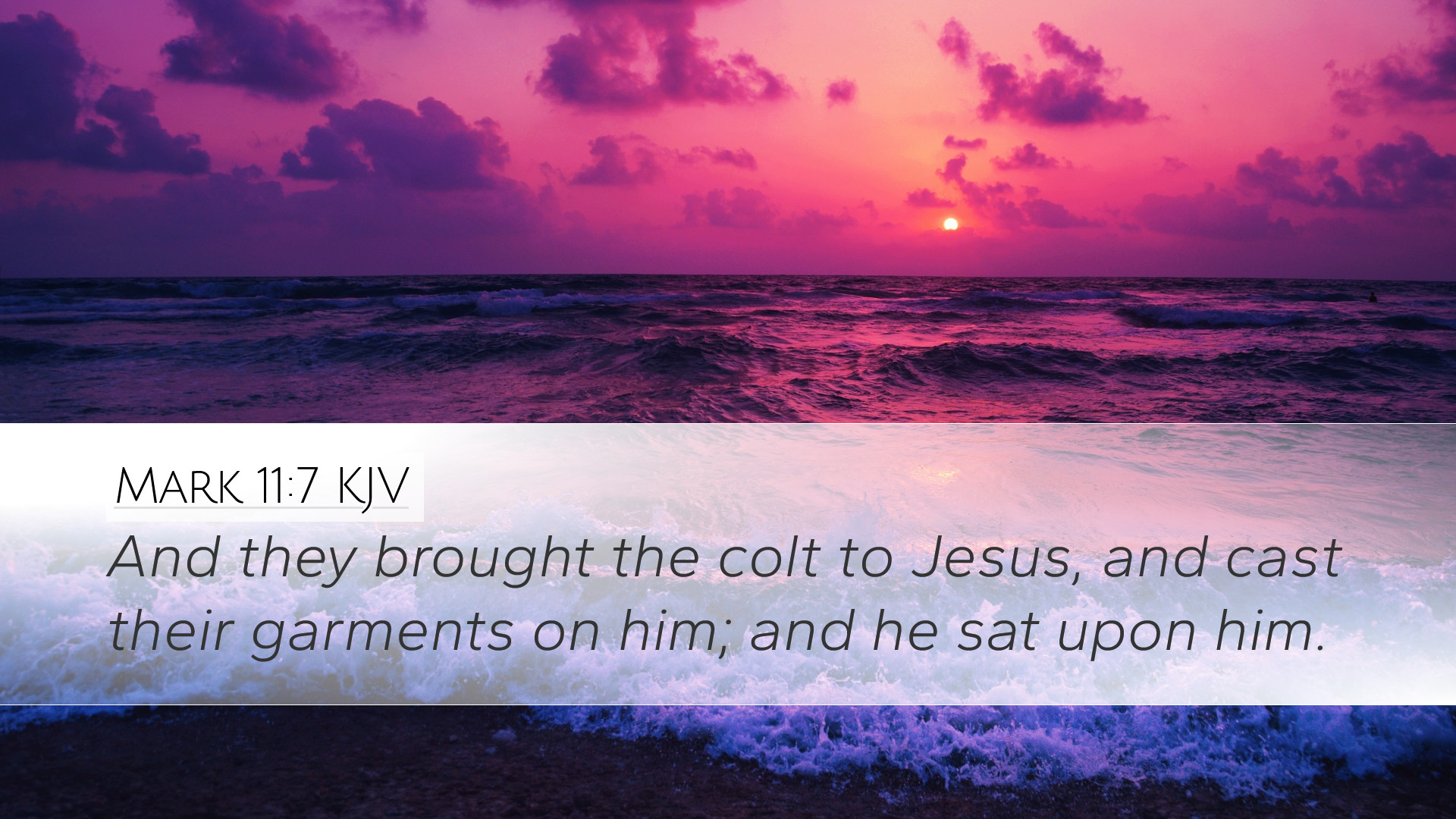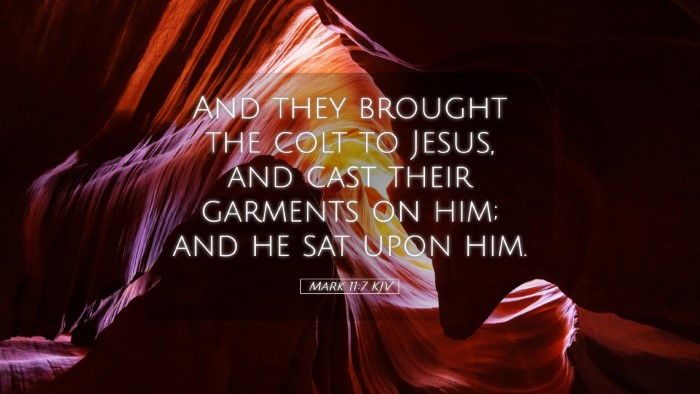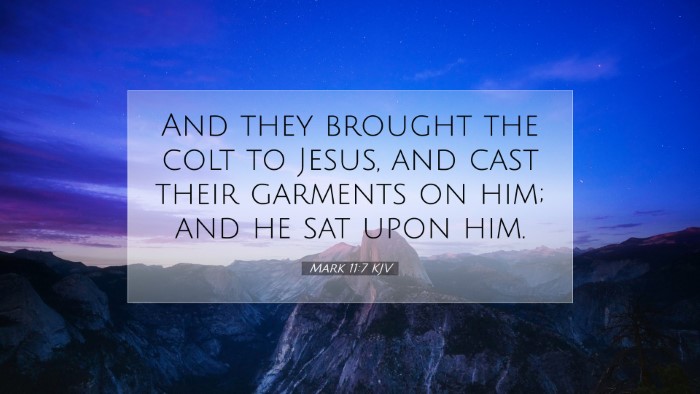Commentary on Mark 11:7
Bible Verse: "And they brought the colt to Jesus and cast their garments on him; and he sat upon him."
Introduction
This passage in Mark 11:7 is a pivotal moment in the life of Christ, marking the beginning of the events leading up to His crucifixion. The actions described not only fulfill prophecy but also reveal profound truths about Christ's identity and mission. Commentary from various public domain sources provides insights into the significance of this event.
Contextual Overview
As Jesus approaches Jerusalem, He prepares for His messianic entry, fulfilling Zechariah 9:9. This prophecy outlines the coming of a humble king who would bring salvation. The act of riding on a colt signifies His peaceful intentions, contrasting with the expectations of a militant Messiah.
Responsibilities and Actions of the Disciples
The disciples' obedience in fetching the colt is noteworthy. They follow Jesus' precise instructions without questioning. This aspect illustrates the importance of faith and obedience in the life of a believer. Matthew Henry emphasizes that their compliance exemplifies the readiness required to serve Christ.
Symbolism of the Colt
The choice of a colt is rich in symbolism. Adam Clarke notes that the colt symbolizes peace rather than war, echoing the character of Christ's kingdom. Riding on a colt, the foal of an ass, shows His lowliness and humility, challenging societal norms regarding power and kingship.
Garments and Their Significance
The act of laying garments on the colt serves as an homage to royalty. Albert Barnes points out that this tradition of spreading garments signifies respect and honor, predating Christ's entry into Jerusalem. It highlights the community's acknowledgment of His authority, albeit temporarily and, in many cases, superficially.
Theological Implications
The significant themes tied to this passage can be explored through various theological lenses:
- Fulfillment of Prophecy: This event directly fulfills prophecy, demonstrating Jesus as the Messiah.
- Nature of Christ's Kingship: His entry proclaims a kingdom founded not on earthly power but on humility and service.
- Public Reception and Misinterpretation: The crowds welcomed Him with enthusiasm, yet their understanding was limited, leading to later disillusionment.
The Response of the Crowds
As Jesus rides into Jerusalem, the crowds' reaction is one of jubilation, shouting "Hosanna!" This expression of praise is significant, as it encapsulates the people's hopes for salvation. Matthew Henry notes that while the crowd's intentions were noble, their understanding was flawed, as they sought deliverance from Rome rather than from sin.
The Reaction of the Pharisees
In this context, we also see the response of the religious leaders. Albert Barnes highlights that they viewed Jesus' popularity with suspicion and fear, recognizing it as a threat to their authority. Their reluctance to accept Jesus as the Messiah underscores the tension between the old covenant and the new.
Conclusion
Mark 11:7 encapsulates profound truths about the Messiah's character, the nature of His kingdom, and the misalignment between divine purpose and human expectation. The details of this event serve as a reminder to modern believers of the importance of recognizing Christ not just as a king who rules but as a servant who saves. The commentaries provide a deeper understanding of these dynamics, encouraging readers to reflect on their own responses to the Savior.


